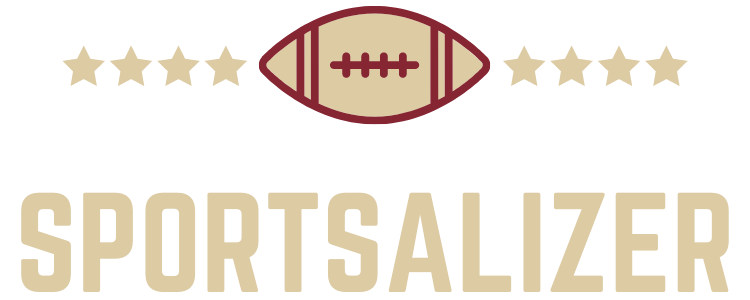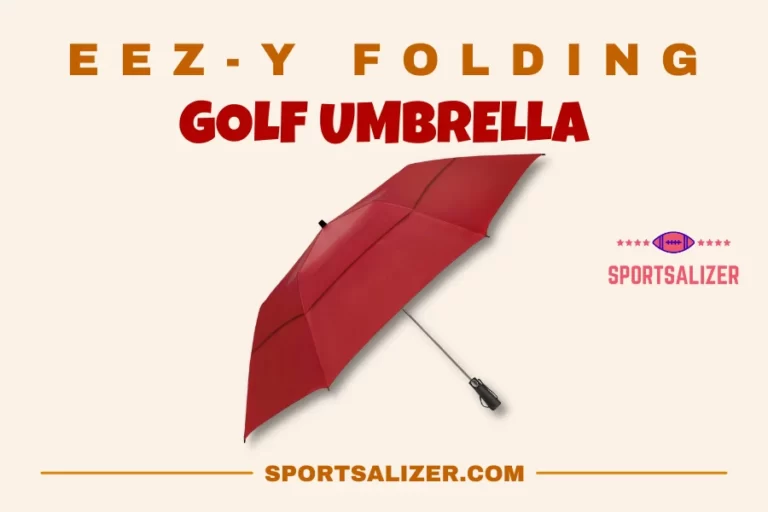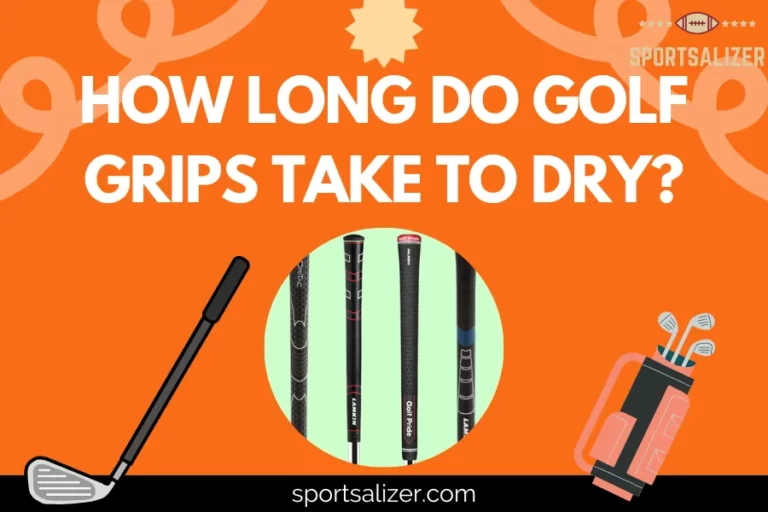Slice vs Hook: Which is More Detrimental to Your Golf Game?

The game of golf is a game of skill that calls for a great deal of patience in addition to practice and technique. Mastering the many kinds of shots that are necessary to play the game of golf is one of the components of the sport that presents one of the greatest challenges. Two of the most common shots that golfers struggle with are the slice and the hook. In the following paragraphs, we will examine the key distinctions between slice vs hook, as well as the factors that contribute to each one and the solutions to their respective problems.
Contents
- 1 Understanding the Slice
- 2 Causes of the Slice
- 3 Correcting the Slice
- 4 Understanding the Hook
- 5 Causes of the Hook
- 6 Correcting the Hook
- 7 Tips for Avoiding the Slice and Hook
- 8 Golf Grip for Avoiding Slice and Hook
- 9 Alignment for Avoiding Slice and Hook
- 10 Improving Golf Swing Accuracy
- 11 Mastering Straight Golf Shots
- 12 Golf Shot Types and Techniques
- 13 Common Golf Shot Mistakes
- 14 Golf Shot Correction Methods
- 15 FAQs on Slice vs Hook
- 16 Conclusion
- 17 Trending Now
Understanding the Slice
The term “slice” refers to a shot that veers to the right (for right-handed golfers) or to the left (for left-handed players) after being struck by the golf ball. It is a widespread issue that the majority of golfers, particularly novices, face at some point in their games.
A swing path that is outside-in causes a slice, which occurs when the clubhead approaches the ball from the outside, then swings across the ball and into the inside of the target. This causes the ball to spin clockwise, creating a curve to the right.
Causes of the Slice
There are several causes of the slice. An improper grasp is one of the most often occurring reasons. A weak grip may allow the clubface to open up upon contact, which results in an outside-in swing path. This can be avoided by maintaining a firm grasp on the club. Another cause of the slice is poor alignment. If you are not aligned properly, it can cause your swing path to be off, resulting in a slice. Finally, swinging too hard can also cause a slice. When you swing too hard, it can cause your swing path to be off, resulting in a slice.
Correcting the Slice
Correcting a slice requires a lot of practice and patience. Checking your grip should be the first item on your list of things to accomplish. Check that your hold is not too weak and that your hands are in the appropriate place before continuing.
After that, check to see that everything is aligned properly. Before moving on to the next step, double-check that your shoulders, hips, and feet are in the appropriate positions. You should improve on your swing path. Try to swing from the inside out, which will help you to avoid the outside-in swing path that causes the slice.
Understanding the Hook
Depending on the player’s dominant hand, the hook is a stroke that curves to the right (for right-handed golfers) or to the left (for left-handed golfers). It is the reverse of the slicing, and it is created by a swing path that goes from inside to outside.
This indicates that the clubhead first approaches the ball from the inside and then swings across the ball and away from the ball to the outside. This results in the ball spinning in the opposite direction as the clock, producing a curve to the left.
Causes of the Hook
Like the slice, there are several causes of the hook. An improper grasp is one of the most often occurring reasons. When your grip is excessively firm, it might force the clubface to shut at contact, which results in an inside-out swing path.
This is exactly the reverse of what you had hoped would take place. Another cause of the hook is poor alignment. If you are not aligned properly, it can cause your swing path to be off, resulting in a hook. Finally, swinging too hard can also cause a hook. When you swing too hard, it can cause your swing path to be off, resulting in a hook.
Correcting the Hook
Correcting a hook also requires practice and patience. Examine how firmly you are holding the object before doing anything else. Check that you are not holding too tightly and that your hands are in the appropriate position before continuing.
Next, make sure that your alignment is correct. Verify that your feet, hips, and shoulders are in the correct positions before continuing. You should improve on your swing path. Try to swing from the outside-in, which will help you to avoid the inside-out swing path that causes the hook.
Tips for Avoiding the Slice and Hook
There are several tips that you can use to avoid the slice and hook. One of the most important pieces of guidance is to always work on perfecting your swing. The more you practice, the better you will become, and the more control you will have over the route your swing takes as a result of that improvement. One further piece of advice is to concentrate on your grip and your alignment.
Check that your grasp is neither too weak nor too powerful and that your feet, hips, and shoulders are positioned correctly. Also, make sure that your body is in a straight position. In addition, you should work on maintaining a smooth and comfortable swing. Don’t try to swing too hard, as this can cause your swing path to be off, resulting in a slice or hook.
Golf Grip for Avoiding Slice and Hook
A proper golf grip is essential for avoiding slice and hook shots. To ensure an optimal grip, follow these guidelines:
- Put the club in your left hand (if you play golf with your right hand), and position it such that it cuts diagonally across your fingers, starting at the base of your pinky and ending at the middle joint of your index finger.
- Put your thumb on the grip of the club and arrange it so that it points down the shaft while your fingers are wrapped around the club.
- Put your right hand on the club and position it such that the thumb of your left hand is covered by the lifeline of your right palm.
- Wrap your right fingers around the grip, positioning the right thumb on the grip, pointing slightly to the left.
- Maintain a grip pressure of about 5 out of 10, avoiding excessive tightness or looseness.
Alignment for Avoiding Slice and Hook
Proper alignment is critical for avoiding slice and hook shots. To get perfect alignment, carry out the following steps:
- Keep your feet shoulder-width apart and stand perpendicular to the line that you want to hit.
- Position your toes so they are parallel to the target line.
- Check that your knees, hips, and shoulders are all parallel to the line that you’re shooting for.
- Align your clubface so that it is square to the target.
Improving Golf Swing Accuracy
To enhance your golf swing accuracy, practice the following:
- Maintain a consistent tempo throughout your swing.
- Maintain your concentration on making a fluid transition from your backswing to your downswing.
- Keep your head steady during your swing, avoiding excessive movement.
- During the downswing, you need to make sure that your weight is transmitted from your back foot to your front foot in the correct manner.
Mastering Straight Golf Shots
To consistently hit straight golf shots, work on these aspects:
- Develop a solid pre-shot routine, which includes visualizing your shot and taking practice swings.
- Use the proper grip and alignment techniques discussed earlier.
- Maintain a balanced stance throughout your swing.
- Focus on maintaining a consistent clubface angle at impact.
Golf Shot Types and Techniques
Understanding various golf shot types and techniques is crucial for optimal performance on the course. Some common shot types include:
- Drive: A long shot off the tee, typically using a driver or fairway wood.
- Approach: A shot aimed at reaching the green, usually with an iron or hybrid club.
- Chip: A short, low-trajectory shot around the green, typically with a wedge.
- Pitch: A high-trajectory shot aimed at stopping quickly on the green, usually using a wedge.
- Putt: A shot that is played on the green with the intention of rolling the ball into the hole.
Common Golf Shot Mistakes
Mistakes are inevitable, but recognizing common errors can help you correct your game. Some frequent golf shot mistakes include:
- Poor grip or alignment, leading to slice and hook shots.
- Rushing the swing, resulting in a lack of control and accuracy.
- Inadequate weight transfer during the swing, causing inconsistent contact.
- Lifting the head prematurely, resulting in topped or thin shots.
Golf Shot Correction Methods
To rectify common golf shot mistakes, implement these correction methods:
- Regularly practice proper grip and alignment techniques.
- Create a pre-shot ritual that you can follow consistently to help you keep your concentration.
- Work on your swing tempo and transition between backswing and downswing.
- Use video analysis to identify and correct swing flaws.
- Consider getting golf lessons from a professional in order to acquire individualized direction and comments on your performance.
FAQs on Slice vs Hook
What is the difference between a golf slice and a hook?
Slices and hooks are shots that curve to the right or left, respectively, for right-handed and left-handed golfers.
What causes a golf slice?
A golf slice results from an outside-in swing path, in which the clubhead starts on the outside of the ball and subsequently crosses it to the inside. The ball will begin to spin in a right-hand curve as a result of this action.
What causes a golf hook?
A golf hook results from a swing path in which the clubhead starts inside the ball and moves across it to the outside. The result is a leftward curvature as the ball spins anticlockwise.
How can I fix my golf slice or hook?
Fixing a golf slice or hook requires practice and patience. It involves focusing on your grip, alignment, and swing path. For a slice, you should try to swing from the inside out, while for a hook, you should try to swing from the outside in. It is also important to ensure that your grip is not too weak or too strong and that your feet, hips, and shoulders are aligned properly.
Can a golf slice or hook be beneficial in certain situations?
While a golf slice or hook is generally considered a problem, there may be situations where it can be beneficial. For example, a slice may be useful for getting around an obstacle on the course, while a hook may be useful for hitting a shot that needs to land softly on the green. However, in most cases, driving the ball straight down the fairway is the ideal strategy.
Conclusion
The slice and hook are two of the most common shots that golfers struggle with. The slice is caused by an outside-in swing path, while the hook is caused by an inside-out swing path. Correcting these shots requires practice and patience, as well as a focus on grip, alignment, and swing path.
You may improve your golf game and prevent the aggravation that comes with hitting slices or hooks if you follow these tips and tactics and follow them exactly as described. Remember, golf is a game of skill, and with practice, you can master the art of hitting straight shots down the fairway.










